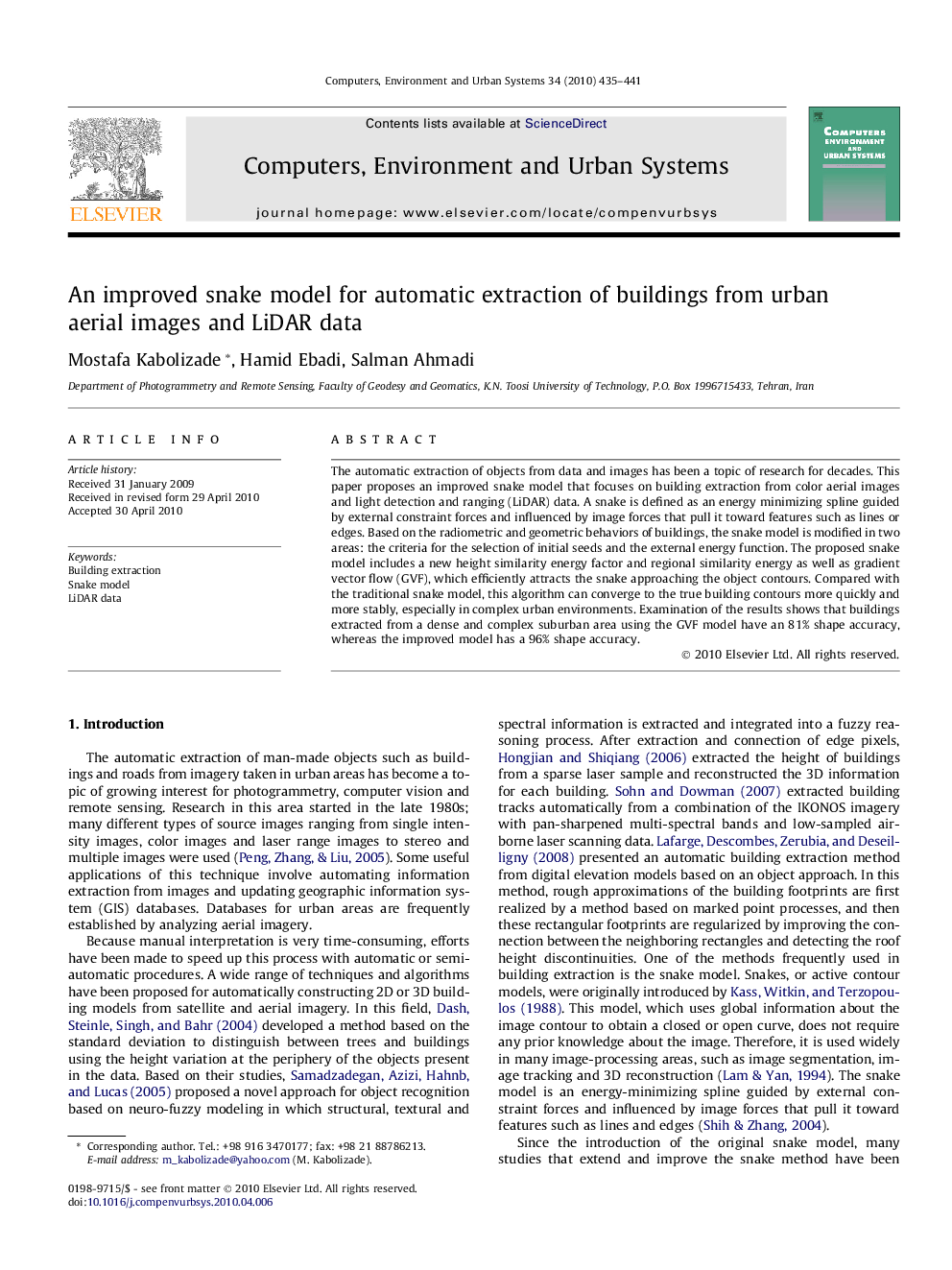| Article ID | Journal | Published Year | Pages | File Type |
|---|---|---|---|---|
| 506721 | Computers, Environment and Urban Systems | 2010 | 7 Pages |
The automatic extraction of objects from data and images has been a topic of research for decades. This paper proposes an improved snake model that focuses on building extraction from color aerial images and light detection and ranging (LiDAR) data. A snake is defined as an energy minimizing spline guided by external constraint forces and influenced by image forces that pull it toward features such as lines or edges. Based on the radiometric and geometric behaviors of buildings, the snake model is modified in two areas: the criteria for the selection of initial seeds and the external energy function. The proposed snake model includes a new height similarity energy factor and regional similarity energy as well as gradient vector flow (GVF), which efficiently attracts the snake approaching the object contours. Compared with the traditional snake model, this algorithm can converge to the true building contours more quickly and more stably, especially in complex urban environments. Examination of the results shows that buildings extracted from a dense and complex suburban area using the GVF model have an 81% shape accuracy, whereas the improved model has a 96% shape accuracy.
